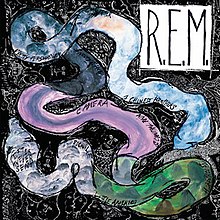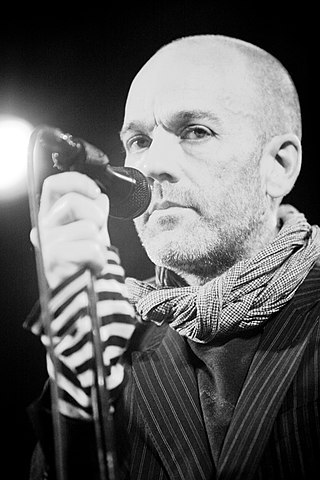
John Michael Stipe is an American singer, songwriter and artist, best known as the lead singer and lyricist of alternative rock band R.E.M.
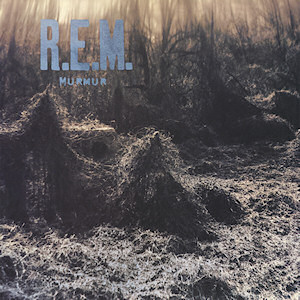
Murmur is the debut studio album by American alternative rock band R.E.M., released on April 12, 1983, by I.R.S. Records. Murmur drew critical acclaim upon its release for its unusual sound, defined by lead singer Michael Stipe's cryptic lyrics, guitarist Peter Buck's jangly guitar style, and bass guitarist Mike Mills's melodic basslines.

Chronic Town is the debut EP by American alternative rock band R.E.M., released on August 24, 1982, on I.R.S. Records. Containing five tracks, the EP was recorded at the Drive-In Studio in Winston-Salem, North Carolina, in October 1981, eighteen months after the formation of the band. Its co-producer was Mitch Easter, who produced the band's "Radio Free Europe" single earlier in 1981.
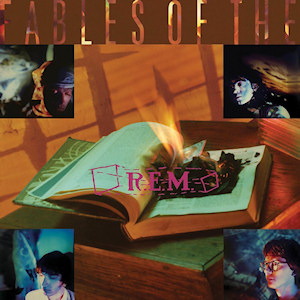
Fables of the Reconstruction is the third studio album by American alternative rock band R.E.M. It was released on June 10, 1985 through I.R.S. Records. It was the band's first album recorded outside of the U.S., with sessions taking place at Livingston Studios in London with producer Joe Boyd. The record displays a darker, murkier sound and lyrics drawing from Southern Gothic themes and characters. Additionally, more varied instrumentation is utilized, including string and brass arrangements and banjo.
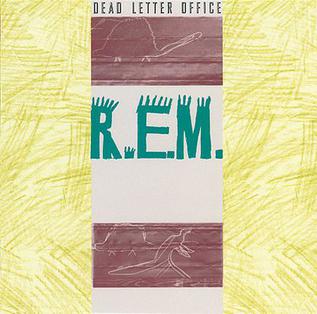
Dead Letter Office is a rarities and B-sides collection by R.E.M., released in April 1987. The album is essentially a collection of many additional recordings R.E.M. made from before Murmur to Lifes Rich Pageant that were outtakes or released as B-sides to their singles internationally. Many of the tracks are favorite cover versions indicating the band's disparate influences and musical tastes, including three Velvet Underground covers, and songs by Aerosmith, Roger Miller, and fellow Athenians Pylon ("Crazy").

Eponymous is the first greatest hits album by the American alternative rock band R.E.M., released in 1988. It was their last authorized release on I.R.S. Records, to whom they had been contracted since 1982, having just signed with Warner Bros. Records.

"Radio Free Europe" is the debut single by American alternative rock band R.E.M., released in 1981 on the short-lived independent record label Hib-Tone. The song features "what were to become the trademark unintelligible lyrics which have distinguished R.E.M.'s work ever since." The single received critical acclaim, and its success earned the band a record deal with I.R.S. Records. R.E.M. re-recorded the song for their 1983 debut album Murmur. The re-recording for I.R.S. became the group's first charting single, peaking at number 78 on the Billboard Hot 100 chart. The song is ranked number 389 in Rolling Stone's 500 Greatest Songs of All Time. In 2009, it was added to the Library of Congress's National Recording Registry for setting "the pattern for later indie rock releases by breaking through on college radio in the face of mainstream radio's general indifference."
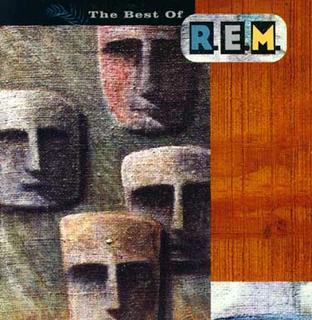
The Best of R.E.M. is a greatest hits album by R.E.M. released in 1991, shortly after the success of the band's seventh studio album, Out of Time, released by Warner Bros. The Best of R.E.M., however, was released by the band's previous record label, I.R.S. Records, and only includes tracks from their first five albums while the group was with that label. As such, it covers their output from 1982 to 1987.
"All the Right Friends" is one of the earliest songs written by R.E.M., written by Peter Buck and Michael Stipe in 1979 before meeting their future bandmates, according to Peter Buck's liner notes to the band's In Time compilation album. Like all R.E.M. songs, its composition is credited to all members.

And I Feel Fine... The Best of the I.R.S. Years 1982–1987 is a compilation album by American band R.E.M. It features songs from the band's years at I.R.S. Records. All tracks have been remastered, and the set was released 12 September 2006. A companion DVD, titled When the Light Is Mine, was released the same day.
"Gardening at Night" is a song by American rock band R.E.M. It was recorded for the band's 1982 debut EP Chronic Town.
Community Trolls was the group name of a short-lived musical duo between Michael Stipe of R.E.M. and Matthew Sweet. In 1983, they collaborated as part of the Athens, Georgia, music scene, writing and recording three songs together. One of the compositions, "Tainted Obligation", was nearly released on a compilation album in 1986, and later appeared on bootlegs; it was released officially in 2002. Another Community Trolls' song, "Six Stock Answers", appeared in an unreleased indie film featuring Stipe, Sweet and some of their friends.
"Sitting Still" is a song by American rock band R.E.M. that was issued on their first single in 1981 and on their 1983 debut album Murmur.
"7 Chinese Bros." is a song by R.E.M. that was first released on their 1984 album Reckoning.

R.E.M. was an American rock band from Athens, Georgia, formed in 1980 by drummer Bill Berry, guitarist Peter Buck, bassist Mike Mills, and lead vocalist Michael Stipe, who were students at the University of Georgia. One of the first alternative rock bands, R.E.M. was noted for Buck's ringing, arpeggiated guitar style; Stipe's distinctive vocal quality, unique stage presence, and obscure lyrics; Mills's melodic bass lines and backing vocals; and Berry's tight, economical drumming style. In the early 1990s, other alternative rock acts such as Nirvana and Pavement viewed R.E.M. as a pioneer of the genre. After Berry left the band in 1997, the band continued its career in the 2000s with mixed critical and commercial success. The band broke up amicably in 2011 with members devoting time to solo projects after having sold more than 90 million albums worldwide and becoming one of the world's best-selling music acts.

"Pretty Persuasion" is a song by R.E.M. that was first released on the band's 1984 album Reckoning. It was released as a promotional single and reached number 44 on Billboard's Rock Tracks chart. According to R.E.M. biographer Tony Fletcher, it is often regarded as "the 'archetypal' R.E.M. anthem".

Live at The Olympia is a live album by American alternative rock band R.E.M. It was recorded during the band's five-night residency at the Olympia Theatre, Dublin, between June 30 and July 5, 2007, and released on October 27, 2009. In this series of "working rehearsals" the songs on Accelerate were debuted, with many still works in progress. Every song from "Accelerate" appear on the album with the exception of "Hollow Man" and "Sing for the Submarine". The album is a two-CD release, and contains a total of 39 songs. In addition, a DVD with a documentary entitled This Is Not a Show directed by Vincent Moon is included. A special edition box set containing the album on four LPs as well as the two CDs and the DVD is also available.

Part Lies, Part Heart, Part Truth, Part Garbage 1982–2011 is a 2011 greatest hits album from alternative rock band R.E.M. Intended as a coda on their career, this is the first compilation album that features both their early work on independent record label I.R.S. Records in addition to their 10 studio releases through Warner Bros. Records. The double-disc retrospective was released through Warner Bros. on November 11, 2011, and was compiled by the band members; the existence of the compilation was revealed simultaneously with the group's announcement that they were disbanding on September 21, 2011.

Green is the sixth studio album by American rock band R.E.M., released on November 7, 1988, by Warner Bros. Records. The second album to be produced by the band and Scott Litt, it continued to explore political issues both in its lyrics and packaging. The band experimented on the album, writing major-key rock songs and incorporating new instruments into their sound including the mandolin, as well as switching their original instruments on other songs.
